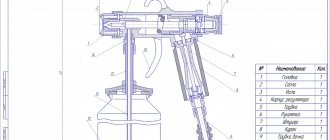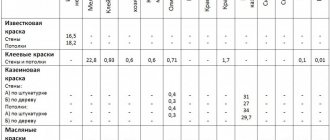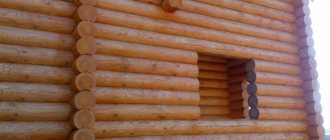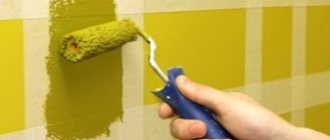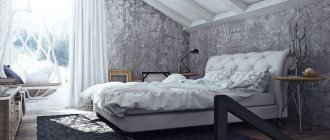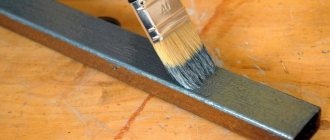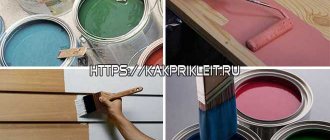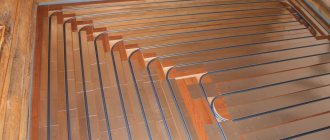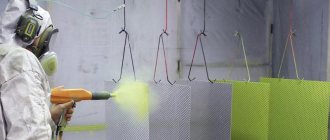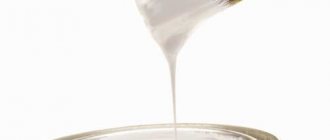Forged products are back in fashion. Such elements alone can add respectability and a chic appearance to any interior and exterior of buildings. To enhance the effect and further protect structures from external influences, forge paints designed for metal surfaces are used.
There is a special category of paints for painting forged products.
Features of blacksmith paints
Forge-type dyes are distinguished by the presence of a large number of anti-corrosion fillers - aluminum powder, fine glass, etc. This enamel can be applied not only to metal, but also to surfaces made of wood, hard plastic, glass, and ceramic tiles.
Some compositions require preliminary priming, others combine the characteristics of a primer and a decorative coating. In difficult areas, primer-enamels with a rust converter are used.
Once the appropriate composition has been applied, the rust is converted into a chemically neutral, durable coating, thereby enhancing the anti-corrosion properties of the primer solution.
Purpose and scope
Blacksmith's paints are used as rough coatings for furniture, machine tools and various devices.
This is due to their characteristics, including:
- long service life of the coating - 10 years;
- increased adhesion - when impacted, the protective layer does not peel off from the base;
- resistance of the material to ambient temperatures -60…+150°C;
- high anti-corrosion protection;
- fast drying period;
- economical consumption, which allows you to apply a thin layer of dye.
A popular application is the decorative finishing of metal surfaces. Forge paints allow you to create various visual effects - from roughness and matte to imitation bronze covered with patina. Such coatings look most attractive on forged products, lanterns, grilles, stair railings and other artistic elements.
Special preparation of metal products before painting
Initially, primary processing of metal surfaces is carried out, and only then paint and varnish material is applied. If forged products have been under the direct influence of environmental factors for a long time, then due attention will have to be paid to their pre-treatment. Thus, it will be necessary to remove the paint that has already peeled off, as well as get rid of the loose layer of rust. All this can be done with coarse sandpaper, a wire brush or a sander. In cases where there are quite a lot of metal products or elements, a sandblasting machine is used.
Available effects and methods
A wide range of blacksmith paints is presented in several categories:
- Compositions with a hammer effect, the texture of which resembles embossing made with a hammer. The dyes have not only a wide range of colors, but also high resistance to fading. The peculiarity of such mixtures is the creation of a monochromatic coating, on which the effect of aluminum flakes and uneven patterns appears.
- Enamel imitating graphite. It can be made in dark gray or in red or green tones. The material has good covering power and can be used on any metals and alloys. Graphite shine is often used as a basis for applying an artificial patina.
- Forging solutions with aging effect. The combination of 2-3 colors gives the relief elements an antique look. Branded companies produce at least 50 variants of shades and imitations of precious metals, copper and bronze. The protruding areas of the finished product are covered with light paint. If desired, you can add highlights at high points of the plane.
- Materials containing acrylic binders can be used without preparing the base. With the help of such mixtures it is possible to create matte and rough surfaces or coatings with a metallic effect.
A separate group is represented by powder paints, which are recommended for use when welding was not used during installation.
Among the advantages of mixtures are:
- Economical. During dyeing, less than 5% of the solution is lost, while losses of liquid dyes can exceed 35%.
- Strength.
- Resistance to adverse environmental conditions and the negative effects of chemical reagents.
- Health safety.
Paints with special capabilities
Blacksmith paints also include a number of special compositions:
- Fire retardant water-dispersed dyes. They are used on previously degreased and primed surfaces, while mixtures FL-03K, GF-0163, GF-21 are used as primer. The paint is applied in 4-5 layers and dried for 12 hours at a temperature of +20°C.
- Electrically conductive paint ZINGA, the composition of which includes up to 96% zinc. Most often it is used as an alternative to hot-dip galvanizing and galvanic metallization. The dye is also in demand when priming or repairing metal substrates. The mixture is applied to a pre-degreased rough base. Before finishing and during work, the dye is mixed every 20-25 minutes. This is necessary in order to prevent the substance from settling to the bottom of the container.
- To finish surfaces that are operated at temperatures of -50... +600°C or are regularly exposed to aggressive environmental influences, organosilicon and organosilicate enamels are used.
Degreasing
The next step is degreasing. When cleaning new forged elements, certain rules must be followed. Thus, ferrous metal products straight from the factory may have stains of an oil or grease nature. Also, various lubricants may remain on their surface. Under such circumstances, you can get rid of all this by using any solvent or a 5% solution of a synthetic detergent to wash off. Metal products that have a smooth, shiny surface require sanding with 40-grit or higher sandpaper to remove dust.
In this case, zinc surfaces are washed off under high pressure of water, while aluminum surfaces are not cleaned at all, they are only degreased.
Application rules
Before painting with liquid products, the work surface is cleaned of dirt, rust deposits and old paint, and then degreased. For better adhesion, the metal can be cleaned with an abrasive material.
The composition is mixed and shaken, then diluted with a solvent in a ratio of 1:10 and the base is applied with a roller. After 2-3 hours, the procedure is repeated using undiluted dye. To obtain a durable coating, it is recommended to apply 2-3 layers of paint.
A rounded brush with a stiff brush is used to paint over uneven areas, edges, seams and difficult-to-reach areas. Three thin layers of enamel are applied to vertical surfaces, and two are applied to horizontal surfaces.
Hammer paints do not require a primer, so they can be used to cover areas affected by corrosion. Such compositions are recommended for use on cast iron and steel surfaces.
Powder painting is carried out in small chambers, so when processing large structures they are cut into smaller parts. The coating is applied in a thin layer using a sprayer. It is necessary to renew the protective layer once every 2-3 years.
The final hardening of forging coatings occurs within a day, and a characteristic pattern appears on the surface of the product.
Features of coloring
Acrylic compositions for forged surfaces.
In many cases, paints in this category have an acrylic base. This makes it possible to use them for most metals.
The instructions allow you to use the compositions on galvanized and steel surfaces, cast iron, brass, copper, lead, aluminum and even hard polymers.
- Initially, the surface should be cleaned of dirt and degreased.
- Thanks to its excellent adhesion, the paint can be applied even to an unprimed surface. However, to achieve extremely strong adhesion, it is allowed to sand the metal with emery cloth.
- The paint is applied in one or two layers, allowing it to dry. You can use a brush, or the electrostatic method, as well as spraying. For the latter case, the desired consistency is achieved by diluting with water.
Note! If you intend to renew an object with an existing old paint layer, remove its loose fragments. Then test the new paint for compatibility with the old one by painting a small area of the old one. If no swelling or corrosion is observed, you can begin work.
Popular brands
Popular materials include products from the German brand Weigel Schmidt GmbH. WS-Plast coating has high anti-corrosion characteristics. These paints increase the service life of metal structures. The substance consumption is 125 g/m². Most of the company's product range consists of graphite-effect dyes, among which are emerald and white enamels, as well as a composition with a red tint.
The WS-Patina brand with a patina effect allows you to recreate the mysterious shine of old bronze and unusual relief patterns on the metal surface. The cost of such coloring will be less than coating the product with silver or gold.
Hammerite 2 in 1 hammer paint is a quality British-made product that combines paint and primer. It is applied to rust without prior preparation. The product dries within 1.5 hours. Final hardening of the surface occurs 2 weeks after painting.
Of the domestic manufacturers, the most popular are paints from. The solution contains Novax enamel with anti-corrosion properties on an alkyd basis and a 2-component composition intended for use in aggressive environmental conditions.
Hammer paint for metal: types and advantages of forge paints, surface preparation and painting technology
Scope and properties of ceramic paint
Properties of heat-resistant paint: advantages and scope, types of compositions and coating technology
Varnish coating for metal: features and advantages
Brief description of the composition
Enameled blacksmith paint is designed to protect and decorate metal surfaces. Metal mechanisms, structures, objects, furniture are painted. The texture is different from simple formulations.
Manufacturers introduce the following into the CM:
- acrylic components;
- elements of alkyd-styrene compositions;
- epoxy resins;
- glass.
The last two components give the coating strength. Metal pigments and silicone resins are introduced into the composition. They enhance the protective functions of the paint from external negative factors of nature and help ensure that the CM lies smoothly. A smooth surface is formed. The painted metal base is protected from corrosion, which increases its service life.
Until recently, the enameled decorative layer was exclusively gray. Today, pigment is added to the composition, which makes it possible to paint with colored paint with a metallic shine. As a result of painting, a matte, rough surface is formed, imitating bronze, covered with patina. To create the effect of artificial aging of metal, gold or silver shades are applied.
Shades
Coatings made from acrylic binders can be used without pre-treatment of the surfaces. With their help it is possible to create a metallic effect, as well as a matte or rough surface. Gold and silver shades are most often used to artificially age objects. But the choice is not limited to them; it is possible to create purple, blue or bronze elements.
Forge paints are distinguished by the presence of lamellar additives that provide protection from negative influences and create excellent adhesion to prepared surfaces.
Division of compositions into categories
Forge paints are grouped according to the resulting coating texture:
- The texture, reminiscent of embossing, is formed by a composition with a hammer effect. The paint is available in an assortment of colors and retains the brightness of the shades. The layer is monochromatic with the effect of aluminum flakes and uneven patterns.
- A layer of dark gray, red, green is formed after applying enamel that imitates graphite. CM can be applied to any metal or alloy. The sheen of graphite often serves as the basis for a patina.
- Relief elements acquire an antique look after painting with a blacksmith's solution with an aging effect. A combination of 2 or 3 shades is used.
- Matte, rough, and metallic-effect coatings form compositions with acrylic components. They can be applied without surface preparation.
- The powder composition is used to coat structures assembled without welding.
Blacksmith paintwork is used for painting:
- safes;
- automobile body (in mechanical engineering);
- home and garden interior items;
- gardening equipment;
- working mechanisms: machines, units;
- metal fences (gates);
- structures in the construction industry;
- items of blacksmith labor: forged products.
The dye interacts with ceramics, with a base made of plastic, glass, wood. At the same time, the coating is not inferior in strength to that on a metal base. The enamel does not hold on a vertical surface. The paint runs off, forming smudges. The item must first be installed horizontally before painting.
Manufacturers produce the composition in different volumes and in containers in the form of a can, bucket, or aerosol.
Positive and negative aspects of using paints and varnishes
The demand for paint is explained by its ability to protect substrates made of different materials from the effects of adverse factors. The coating maintains the functionality of the product even in emergency conditions.
- The dye is resistant to temperature fluctuations. There are modifications of it that can withstand temperatures from -60 o C to +150 o C.
- The material is applied without first removing rust.
- CM with high drying speed.
- The coating is moisture-resistant and can withstand force. It does not crack from impact and remains solid.
- When applying the dye, minor surface defects are hidden.
- The protective and decorative layer lasts up to 10 years.
- After drying there is no smell, the coating is safe for humans.
- The material is used for painting indoors and outdoors.
- The paint is produced in an assortment of colors.
- The brightness of the shade is maintained for the period of service.
- A decorative layer is formed that retains its appearance due to its dirt- and dust-repellent properties.
- The covering layer does not support the combustion of fire, it is fireproof.
When working with a material, you need to know its negative characteristics:
- If there is a need to remove a layer, it is not easy to do. Caustic solvents and abrasives have a bad effect.
- The consistency of the enamel is thick, which does not allow it to be applied by spray without first reducing the viscosity. You need to know the correct proportions so that the quality of the composition does not decrease.
- High consumption of KM.
- The dye is not available to the average buyer.
The last two points confirm that repairs using a forging compound are not an economical option.
Painting with blacksmith's CM
The composition is applied to red rust spots, over the old layer of paint. It interacts poorly with a base previously painted with oil CM, bitumen and powder paint.
Painting is not carried out without surface preparation:
- surface treatment with solvents (solvent, white spirit);
- attention is paid to removing grease. You may need to repeat washing the base up to three times;
- wipe the area to be painted with acetone;
- use a paper napkin to check the absence of oil stains on the surface;
- areas with a shiny surface are cleaned. Use sandpaper and a metal brush. This increases the tenacity of the CM with the base.
On a metal base:
- the old layer of paintwork, especially peeled pieces, is removed with a metal brush;
- the same tool removes loose rust;
- the cleaned surface is washed with detergent, the powder is thoroughly washed off, and dried;
- aluminum base, stainless steel and galvanized steel are coated with a metal primer; wood – with an acrylic primer (the penetration of CM into the pores of the wood is reduced). Manufacturers have developed compositions that combine decorative characteristics and a primer. For complex shaped metal products, an enamel primer with a rust converter is recommended. All characteristics are indicated by the manufacturer on the container or in the instructions for the composition.
Depending on the area of application of CM, on what kind of painting tool the worker has, one or another painting technology is used. It is recommended to work with forge paint at air temperatures from 10 to 25 degrees above zero and humidity up to 85%.
Modifications of the dye have been developed that are used in any season; the permissible temperature conditions for application are from -30 o C to +40 o C. The composition is applied with a thickness of 100 microns. If the indicator is lower, the protective qualities will decrease. The material is applied by brush, roller, aerosol, mechanical and pneumatic spray.
A two- or three-layer coating is done with a brush. Attention is paid to corners and edges. The waiting time for each layer to dry is 20 minutes. If the configuration of the object is complex, then it is recommended to cover the fourth layer. Select a brush with natural bristles.
Large surfaces are painted with a roller (hard-to-reach places are painted with a brush). A tool with a short-haired wool roller is selected.
You can eliminate defects and paint a small object with an aerosol can. The paint is sprayed at a distance of 20 cm in 3-4 layers.
Before pumping the CM into a pneumatic sprayer, it is diluted with a solvent recommended by the manufacturer of the specific paint purchased. The solvent is introduced into the composition in the proportion: 2:1. If the composition drains, the proportion of solvent decreases. Allow 3 minutes for the first coating layer to dry. After a 15 minute interval, the second and third layers are applied. For an airless sprayer, the paintwork is diluted in the ratio: 9:1. The painting algorithm is the same as with a pneumatic sprayer.
The painted item is ready for use after 12 hours. Forge paint on metal protects the base from rust.
If painting is carried out indoors, ventilation must be provided. After drying, the coating becomes safe for humans.
The remaining material is left in a hermetically sealed container. The composition is stored and transported at a temperature from +30 o C to -40 o C; the sun's rays should not fall on the storage site; containers with the material are not located next to heating devices.
Application of wood imitation paint
Features of using hammer paint on metal
Features of choosing paint for metal products
Storage and safety rules
Blacksmith paint is characterized by the presence of organic volatile solvents. Working with it requires compliance with established rules and regulations. When applying the composition, it is recommended to be in the open air or turn on forced ventilation. After complete hardening, the enamel film is fireproof and has no effect on the human body.
After completing the finishing work, if any remaining paint remains, it should be kept in a closed container. Used rags, waste and spoiled materials are disposed of in non-flammable containers in designated areas.
Transportation and storage are possible in a temperature range from +30 to -45 °C, in the absence of direct exposure to sunlight and close proximity of heating devices.
Forging paints for metal
Zinkor-Barrier
— a primer with 96% zinc in gray color for long-term protection of metal from corrosion. Thanks to the high zinc content and special base, the service life of the coating is up to 10 years per layer. Packaging - 1.7 kg, 5 kg, 10 kg and 38 kg. Sale from 1 can. Free delivery for purchases over 100 kg.
Spray-Zinc
in a convenient 520 ml aerosol can. The material is always available. Discounts when purchasing from 6 pieces. Anti-corrosion coating to protect metal from corrosion for a period of 10 years.
Barrier-Zinc
— zinc-containing paint (96% zinc), guarantees reliable anti-corrosion protection from 10 to 50 years. High efficiency 1 m2 - from 75 rubles! Discounts for forges, metal structures factories and regular customers. Packaging: 1.7 kg, 5 kg, 10 kg, 38 kg.
Zinkor-Top Hammer
— paint for metal with a hammer effect. Can be applied without prior primer or over protective primer. 3 in 1 paint. Apply by brush, roller or spray.
Zinkor-Top semi-gloss
— 3 in 1 anti-corrosion paint for metal in various shades, has high decorative characteristics and service life. Paint outside and inside. Both independently and as a finishing layer under primers.
Zinkor-Top Patina
Designed for decorating metal surfaces in a “antique” manner. Suitable for painting forged, cast and stamped products. Packaging: 10 kg.
Forging paints for metal
– these are compositions for the protective and decorative treatment of forged products. Used for fences, stairs, canopies, window grilles, forged furniture and interior items.
Features of paints for forging
- Can be applied without primer
- High adhesion to forged metal
- Drying 20 minutes
- A variety of textures and colors
- Lasting protective effect for 5 years
Advantages of paints for forged products
- High strength. The coating does not crack or peel off under the influence of precipitation. High humidity and ultraviolet radiation do not affect the appearance of the metal.
- Application on rust. Forge paints are applied to surfaces with a tightly bonded corrosive layer. Suitable for products from which rust cannot be removed.
- Ease of use. Paints are available in the form of aerosols or cans of different sizes. It is easy to choose a composition for painting individual objects or large surfaces.
- Versatility. Blacksmithing paints can be used indoors. For external treatment, application at sub-zero temperatures (down to -20°C) is permissible.
- Anti-vandal protection. In addition to protecting against corrosion, forged fences and grilles become resistant to impacts and scratches from sharp objects.
Decorative options
Blacksmith paints are characterized by a wide variety of colors and textures. Surfaces can be treated with compounds with metallic shades (copper, bronze, silver). They may also have non-standard colors - for example, chocolate or cherry.
The most popular paints for forged products are hammer paints. They create textured coatings for embossing. There are matte and semi-gloss enamels, emphasizing the forging effect. Patinated surfaces look respectable. Gives the products a vintage feel.
Why do forges need cold galvanizing?
- Metal protection period from 10 years per 1 layer
- No need to repaint every year
- You can do galvanizing yourself
- Can be applied using any method - brush, roller, spray gun
Zinc Forging Paints - Save on Metal Protection
Let's say you need to cover a gate with an area of 8 m2. To protect against corrosion for a period of 10 to 15 years, you will need to apply 2 layers and 10 kg of BARRIER-ZINC forging compound (RUB 4,500). Let's add the costs of surface preparation and painter's services. The cost of cold galvanizing is no more than 8,000 rubles.
To galvanize an 8 m2 gate using the hot-dip galvanizing method, taking into account logistics, you will spend at least 25,000 rubles.
The benefits are obvious, especially in times of crisis. You can always order forging compounds in retail packaging and verify the quality of the material.
Our special offer
You will receive a 10% discount on your first purchase. When ordering online or by phone, tell the manager the code word “smithy10”.
Dependence of service life on Barrier-Zinc thickness
| Coating thickness (1 layer - 40 microns) | Life time |
| 40 µm | 7-10 years |
| 60 µm | 10-20 years |
| 80 µm | 14-25 years old |
| 100 µm | 18-25 years old |
| 120 µm | more than 20 years |
Advantages of our paints in production:
- Additional service for factories - galvanizing of products with a guarantee
- Easy and convenient application (drying time 15-30 minutes).
- High quality and durable product
- Increasing enterprise profits
Do you need advice and help in choosing the right composition?
Call us at: +7, 8 (800) 555-34-18
You can leave a request in writing by e-mail:
[email protected]
We work for
Call right now, we guarantee the quality of our products and affordable prices!
How to choose paint for blacksmithing products?
Modern paint and varnish coatings for metal are characterized by ease of use, a wide range of colors and safety for human health. Today there is a large selection of such paints, which can be quite difficult to understand. Forge paint is of great interest. This composition is indispensable for artistic finishing of metal products.
With the help of blacksmith's paint, anyone can realize their wildest design fantasies. For example, you can make an imitation of gold or cast iron on the surface. Despite the fact that many consider metal a less common material for interior design than wood. However, by using blacksmith paint you can create a unique style in your home.
This material allows you to artificially age the metal, highlight smooth curves or, on the contrary, emphasize broken lines. Before application, it is necessary to pre-treat the surface using rust transformers, which improve the adhesion of the paint and varnish composition to the metal.
Use of material
Almost any metal, when in contact with the external environment, changes some properties. Often, not for the better.
Rust, change in color and structure, gradual destruction. Modern blacksmith paint for metal is created not only for protection, but also for a number of other purposes.
Purpose of the product
- Emphasizing and enhancing the effect created by the forging master. The coating hides minor imperfections, bringing the original artistic design to the fore.
Gilding using blacksmith's enamel.
- The product has successfully proven itself in the work of designers. Visually creating a completely different one from one surface by repainting is a fairly effective method. Making copper from aluminum, gold from stainless steel, or platinum from cast iron with your own hands is now extremely simple.
The photo shows an aging effect created using blacksmith's dye.
- Patination, or artificial aging, is an extremely popular technique recently. Even a beginner can turn a new item into a vintage masterpiece using blacksmith paints.
- The coating layer makes the metal resistant to ultraviolet radiation, moisture, and aggressive influences for 7–8 years.
Application area
- Fences, railings, window bars, gazebos.
- Bas-reliefs, external decoration of buildings.
- Monuments, sculptures, memorial complexes.
- Designer furniture, lanterns, lamps.
- Gutters, drainage systems.
- Jewelry and ornaments.
- Antiques and imitation items.
- Metal parts of equipment.
- Scenery.
- Implementation of design solutions in the interior.
Types of blacksmith paints
There are currently several options for quality blacksmith paint available in our country. Their cost may be higher than that of conventional formulations. This is due to the increased wear resistance of these paints, which will last at least five years.
In addition, professional compositions meet all aesthetic criteria for such products.
WS-Plast
One of the most popular are materials from the German brand Weigel & Schmidt GmbH. The most common of them is considered to be WS-Plast coating, which has excellent anti-corrosion characteristics. These paints increase the long service life of metal structures.
In addition, this composition is characterized by increased adhesion to the surface, short drying time and resistance to adverse environmental factors.
The manufacturer offers a wide range of WS-Plast types, thanks to which everyone can feel like a true designer. The most interesting variants of this blacksmith's composition can be considered emerald green, graphite with red tones and antique white.
In the manufacturer's catalog, the main emphasis is on materials with a graphite effect, which can be either typical dark gray or made in more original colors - red or green.
WS-Patina
Of all the offers on the market, the paint and varnish material for metal WS-Patina is of great interest. It has a special patina effect, which distinguishes it from many other compositions. Patina is a greenish-brown coating that appears on copper or bronze items after oxidation.
WS-Patina allows you to create an unusual forged pattern on a metal surface and the mysterious shine of old bronze or copper. As a result, the metal will become more sophisticated and stylish.
Moreover, the cost of such painting will be less than covering the surface with gold or silver.
WS-Patina and WS-Patina are liquid paints and varnishes that can be applied using a roller, brush or any specialized equipment.
Powder paint and varnish compositions
The next group of professional forging compounds can be considered powder paints. Their application requires certain technical equipment, since they are handled only in small chambers designed for this purpose. Recently, such powder compositions have become increasingly popular, due to their positive qualities.
- Economical. When using powder materials, less than 5% of the solution is lost, while when working with liquid formulations, losses can exceed 35%.
- Durability and resistance to adverse weather conditions and the negative effects of chemical compounds.
- Environmentally friendly, which minimizes the negative impact of the paint and varnish composition on the health of craftsmen.
Of course, powder forging paints also have some disadvantages. For example, if during installation you damage a fully processed and dried metal surface, then simply tinting it will not work. You will need to bring the product to a special chamber and finish painting there. This is the main difference between powder forging compositions and liquid ones.
The next feature that needs to be taken into account when painting is the small size of the chambers used for applying powder compositions. Therefore, processing metal products with large sections will require serious work, since they will not fit into such chambers. In this regard, it may be necessary to cut large structures into smaller parts.
Forge hammer paint
The next category of blacksmith paints can be considered hammer paint, which includes Hammerite compositions. Their distinctive feature is that they do not require the preliminary application of rust converters or primers. Therefore, such paints and varnishes can be applied directly to those areas that are corroded by corrosion.
Although, before using Hammerite paint, you will still have to remove old and loose rust. You should also remove paint that has peeled off, as otherwise air bubbles may appear on the metal coating.
Forge paints from this series are recommended to be applied directly to surfaces made of steel and cast iron. At the same time, these compositions can be applied to a surface made of non-ferrous metal.
The peculiarity of hammer paint is that it creates an original monochromatic surface on which you can get the effect of aluminum flakes and uneven patterns.
Thus, today there are several varieties of blacksmith paints, the choice of which should be given special attention. By choosing the right paint and varnish material, you can not only preserve the appearance of the metal product, but also make it more beautiful. In addition, blacksmith paints will help give the surface a sophisticated and elegant appearance.
Forging paint for metal
Water-repellent impregnation for concrete Elcon Aqness
to protect concrete, brick, stone from moisture. Does not change surface color.
Impregnation with wet stone effect Elcon Aqwell
to protect mineral surfaces from moisture. Enhances surface color.
Elcon Weston stone varnish
to give a “wet effect” to surfaces made of natural and artificial stone.
Heat-resistant varnish for stoves and fireplaces Elcon High Therm
for painting brick pipes, stoves, fireplaces and other surfaces. Heat resistance: from -60°C to +250°C.
Wood impregnation Elcon Bio Lasure
to protect wood from rot, mold, wood-boring insects and weathering.
Impregnation for baths and saunas Elcon Sauna Natural
to protect wood under conditions of abundant cyclic moisture and exposure to high temperatures.
Impregnation for end protection Elcon SealTech
to protect the ends of logs from cracking, rotting, wood-boring insects and weathering.
Shelf oil Elcon Sauna Oil
to protect wooden shelves in baths and saunas from exposure to water and contamination.
Heat-resistant paint Elcon Max Therm
for protective painting of stoves, heat pipes and other surfaces. Heat resistance: from -60°C to +1200°C.
Elcon Smith Forging Paint
for protective and decorative painting of metal products obtained by forging, stamping, casting.
Elcon Smith hammer effect paint
for protective and decorative painting of metal surfaces indoors and outdoors.
Decorative patina Elcon Patina
to give the effect of aging to metal products.
Heat-resistant patina for metal Elcon Patina
to give a decorative effect to metal products exposed to heat.
Elcon Primer
for priming metal surfaces before applying Elcon Smith blacksmith paint.
Decorative enamel Elcon Decor
for decorative painting of metal, wood, plastic, plaster and ceramic surfaces.
Types of primers
- Slowing down the process of rust formation.
- Protective, based on phosphoric acid. A film is formed for a long service life.
- Phosphating compounds work well with non-ferrous metals.
- Insulating compounds form a durable film on the metal. Made from alkyd or epoxy material.
The technology for priming a metal surface is described on the product packaging.
When painting metals, special attention should be paid to safety precautions. Most compounds are toxic, so you need to wear respirators, goggles and gloves when painting.
Heaters and open flame sources should not be located near the surface to be painted.
